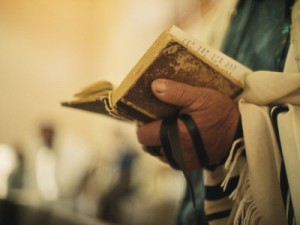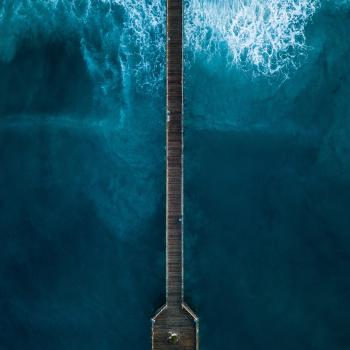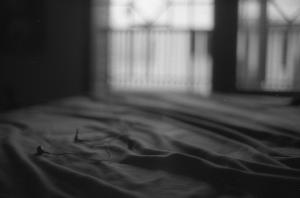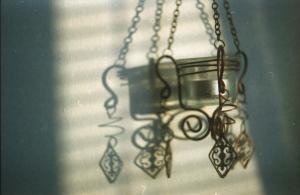 In drafting my last post, “Orthodox Films Fill the Void,” I intended to end the piece with a story that would serve as a thematic button: the day after seeing Fill the Void (a remarkable film released this summer about an ultra-Orthodox family in contemporary Tel Aviv) I finally made good on a long-standing wish to visit a Messianic synagogue.
In drafting my last post, “Orthodox Films Fill the Void,” I intended to end the piece with a story that would serve as a thematic button: the day after seeing Fill the Void (a remarkable film released this summer about an ultra-Orthodox family in contemporary Tel Aviv) I finally made good on a long-standing wish to visit a Messianic synagogue.
For the latter experience filled an even deeper void in its own right than the former—or filled the same void to a deeper degree.
But no less thematic was the fact that my cup had nearly runneth over the word count by the time I was done singing the praises of Fill the Void (and My Father, My Lord before it). As it is wont to runneth over here, looking back on that steamy Saturday morning last month at Congregation Beth El in Manhattan, where I first witnessed Messianic Jews sing the praises of Yeshua Ha’Mashiach, Jesus the Messiah.
Whoa!
More on that shortly. First, whence this desire on my part to go there, both literally and figuratively speaking? Good question. I’m glad I asked.
The answer goes back a long way, a good twenty years. Maybe even longer than that, all the way to the WASP nest country clubs of my childhood to which we sometimes belonged—not for but despite the sociocultural hive free of Jews. Given our Jewish friends outside the hive, the discrepancy was often a quietly disturbing one.
More to the point, I found my way back to poetry in college after losing it a bit from church and the ritual side of Christian faith that had been an underpinning from boyhood through high school.
When I returned to the lyric depths of the Old Testament and found an anchor there in my post-collegiate drift, it was with new ears that I could hear the New Testament afresh. It was King David, Job, Isaiah, Solomon, and Zechariah that helped forge my way back to Matthew, Mark, Luke, John, and Paul.
In a word, it was the word that unveiled with apocalyptic import the Word made flesh.
As I returned with a newfound respect, and eventually a deep need, for the Word-soaked Episcopal liturgy of my upbringing, I was lucky enough—nay, blessed enough—to happen upon the scholarly works of Walter Brueggemann and Margaret Barker.
Between Brueggemann’s clarion call to today’s church with the Prophets for his trumpet, and Barker’s fascinating excavations of the Temple roots of Christian liturgy, my Judeo-Christian heritage slowly but surely began not only to assume a greater balance between its hyphenated terms, but to see that hyphen as a living bridge.
Along the way, once in the bluest moon which made it all the more rare given that I was living in New York, where anything and anyone goes, I would come across sidewalk evangelists for that outermost fringe phenomenon: Jews for Jesus.
Roz Chast, cartoonist for The New Yorker, does justice with hilarity to the phenomenon in a cartoon that features one such evangelist sitting at a table with a poster that reads:
“Jews for Jesus and also for pissing off one’s parents, even if they weren’t religious, in ways that the Hare Krishnas can’t even begin to imagine.”
Before my recent sojourn to a service there, Congregation Beth El’s website let me know that they were not Jews for Jesus—in spirit, yes, but not in name, as the Messianic movement is a tree with many branches.
And I was not a Gentile, but one of the “People of the Calling” invited to join them for worship on Shabbat. The poetic ring to the invitatory term fell on open ears.
As did the sound of a harmonica and guitar when I entered the midtown Presbyterian church where the synagogue meets on Saturday mornings. The rabbi and his two cantors, a twenty- or thirty-something duo who, within the hour, would break my heart wide open, were just warming up—already soaked with sweat, in fact, given the heat wave outside and the lack of air conditioning inside.
I instantly had the sense this was going to be church first-century style, climate included, the instrumentation and sound system notwithstanding.
Perhaps sensing my stranger’s stench of unease at the materials table in the back, a kind man named Randy from the Bronx came to explain and outfit me with what I needed: a siddur (prayer book), tallis (prayer shawl worn by males), and kippah (cap also worn by males).
But he might as well have handed me a time machine, one that traveled in two directions at once between the old and new Jerusalem, for what it was like to hear those two cantors sing their and our hearts out in Hebrew to Yeshua Ha’Mashiach; to behold the joyous greeting of the Torah scroll and see it kissed or touched as it traveled the congregation before the reverential reading; to see Rabbi Bruce Cohen travel from the guitar to the piano and finally to the lectern where he expounded on Exodus with humility, humor, and infectious delight in the blessing of being there all together to worship the One.
What the heaven have I walked into? I wondered in my pew.
There were moments I also could have used a tissue from Randy, whether it was singing “Holy of Holies” that brought me to my knees in bringing me to my feet, or seeing at the end the sight of husbands and wives arm-in-arm beneath the tallis for the closing prayer.
In opening a copy of the latest popular installment to the biographical abyss that is the life of Jesus Christ, Reza Aslan’s Zealot: The Life and Times of Jesus of Nazareth, I happened upon this quote in the middle: “Yet if one wants to uncover what Jesus himself truly believed, one must never lose sight of this fundamental fact: Jesus of Nazareth was first and finally a Jew.”
I would argue the point elsewhere if Aslan’s underlying claim is that Jesus was ultimately and only a Jew.
But here I will simply say, and in Hebrew at that: Amen.
Bradford Winters is a screenwriter and poet, and works for The Levinson/Fontana Company as a producer and writer in television. He lives in Brooklyn with his wife and three children.











